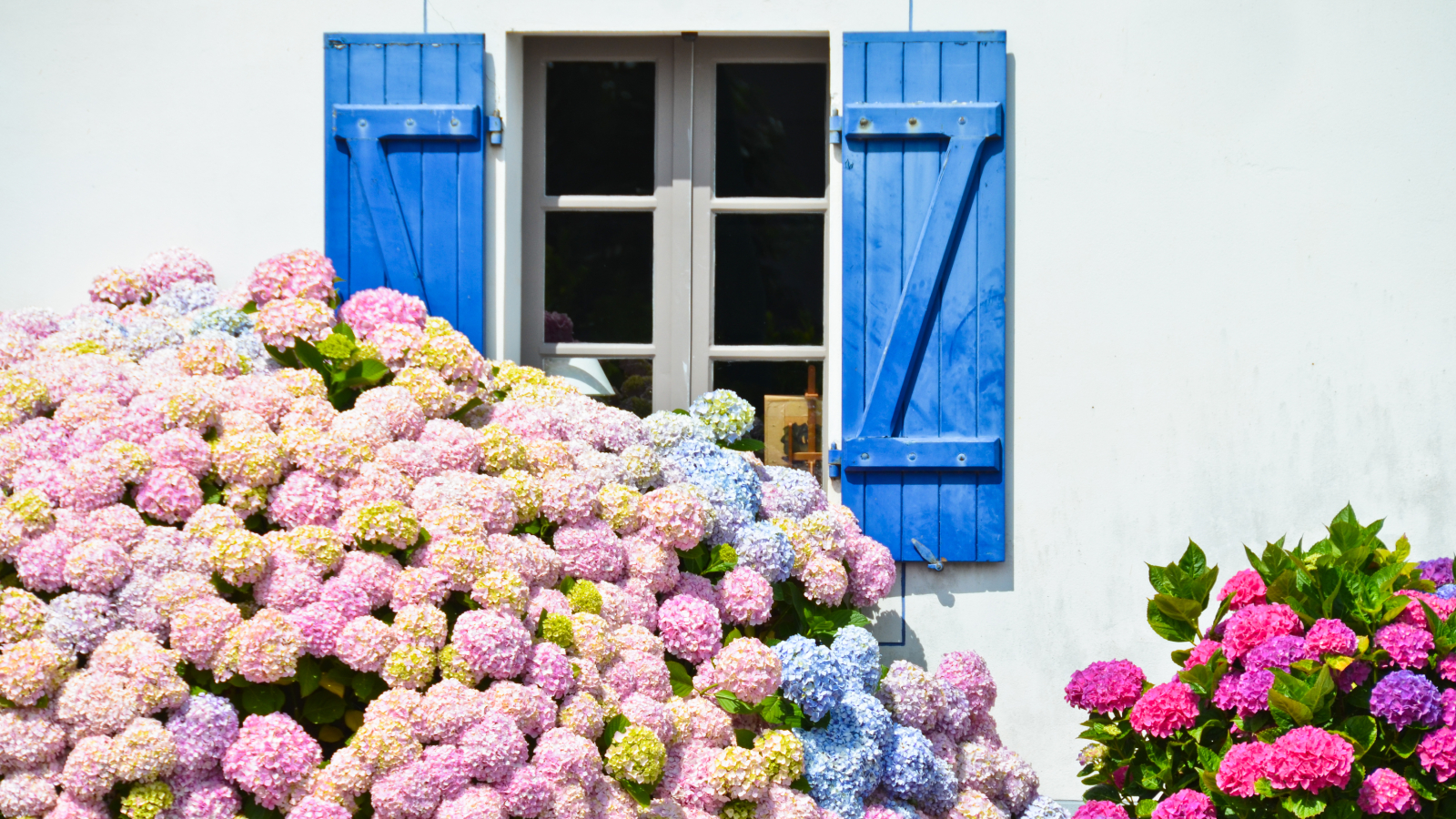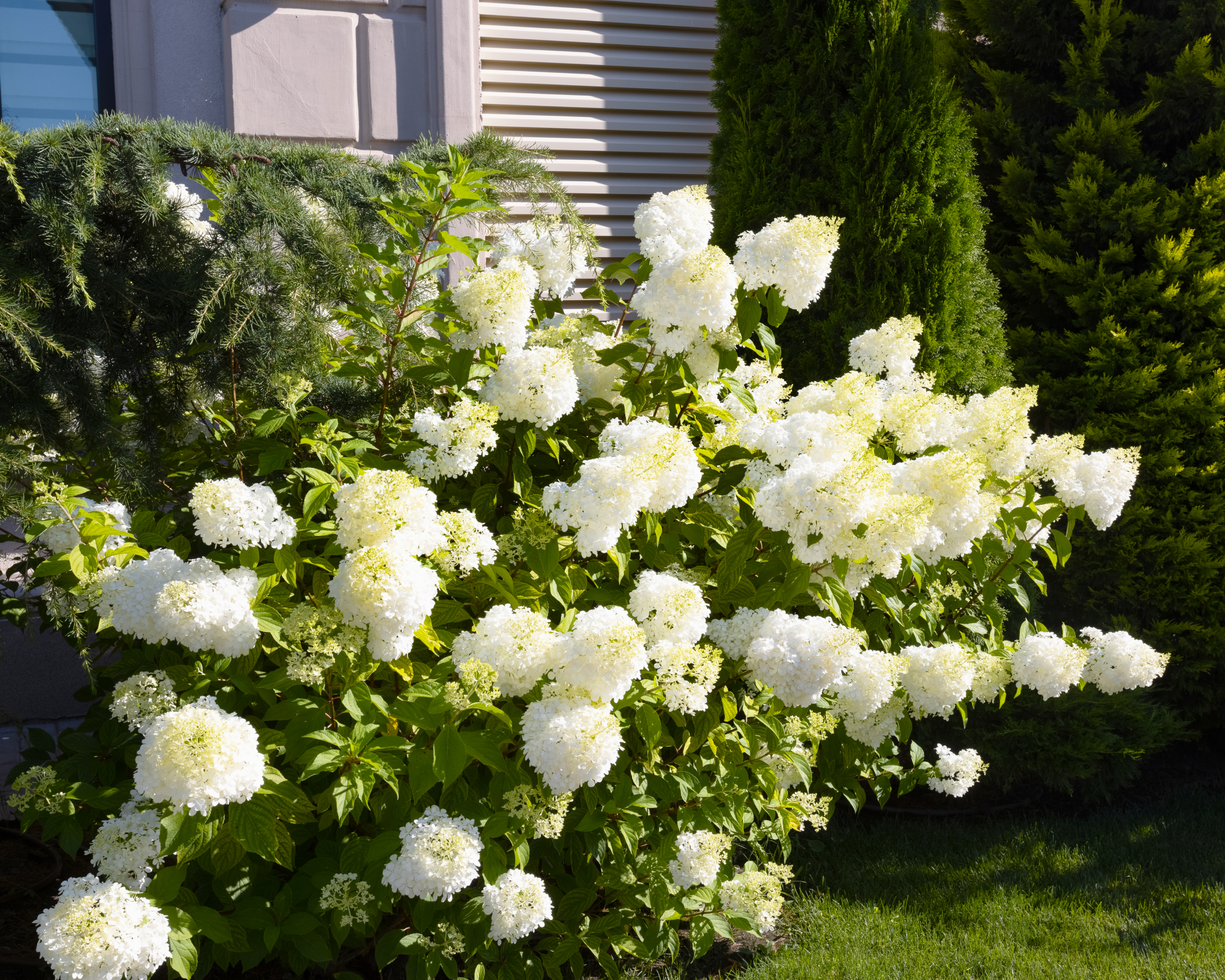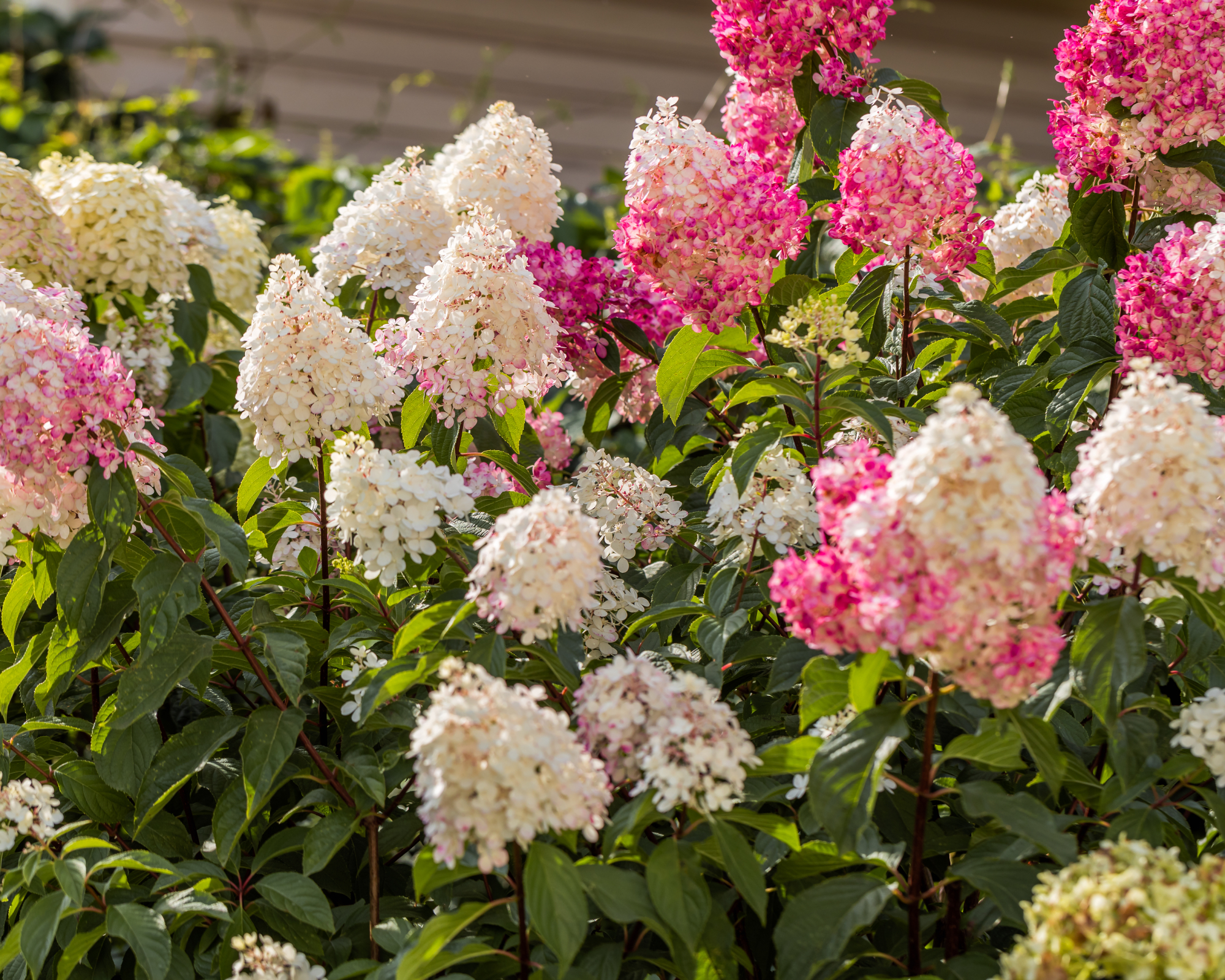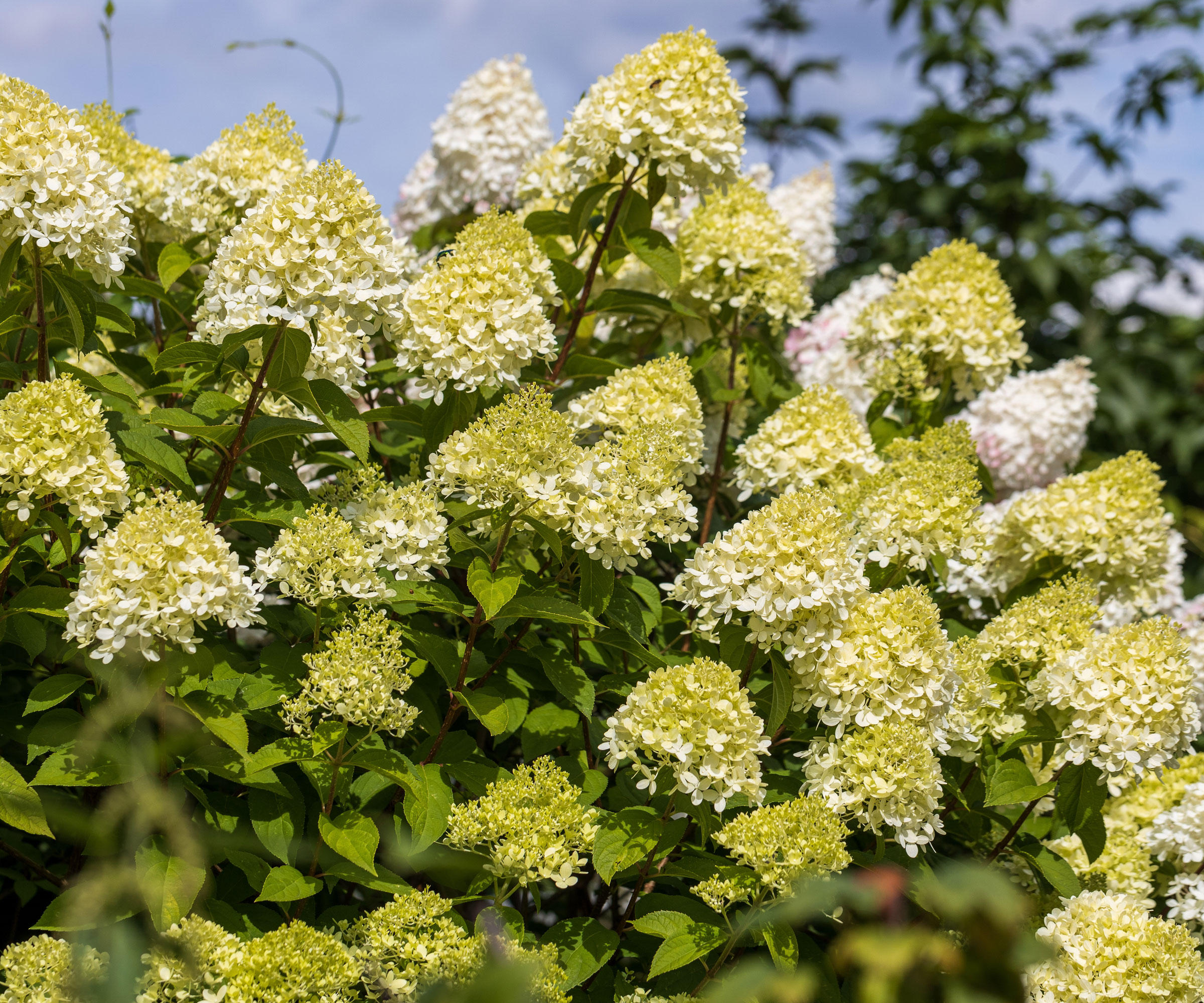Best Full Sun Hydrangeas For Light-Soaked Landscapes – These 4 Shrubs Shine In Sunny Yards & Gardens
Find the perfect full sun hydrangea for your bright, sunny landscape. Plus, follow these tips to make sure shrubs shine in even the most light-filled locations.


Hydrangeas are consistently popular landscaping shrubs, mostly for their spectacular clusters of flowers in various colors. They’re also fairly easy to grow. But to help them thrive, you need to consider growing conditions like sunlight, water, and soil.
Figuring out where to plant hydrangeas, in full sun or in shade, can mean the difference between a shrub that’s filled with flowers and a hydrangea that won’t bloom. Planting a hydrangea that can’t handle sun can also lead to drooping hydrangeas that struggle to survive in the heat of summer.
So how much sun do hydrangeas need to produce tons of beautiful blooms and look lush and lovely all summer? It depends on the type. Here’s what you need to know before you plant a shrub in full sun, plus find out which types of hydrangeas do best in bright light.
Do Hydrangeas Need Full Sun?
The ideal planting location for any type of hydrangea includes rich, fertile soil that remains consistently moist without getting soggy. The soil should drain well to prevent standing water and rotten roots that can damage and kill the plant.
For a hydrangea, sun or shade requirements vary depending on the type. For a spot with full sun, choose a panicle hydrangea or oakleaf hydrangea. These are two of the most sun and heat-tolerant hydrangeas you can grow. Plant these varieties on the south side of your home to give them more light.
For a spot with partial shade or dappled shade, choose a bigleaf hydrangea. Bigleaf hydrangeas, like mophead hydrangeas, do well on the north side of a house because they prefer indirect sunlight or sun for only part of the day.

Caring for Hydrangeas in Full Sun
Can hydrangeas take full sun? Yes, if you choose the right type. Panicle hydrangeas are the best choice for planting in a spot with full sun. With all the sunlight they need, they are easy to care for and even do well in a range of USDA growing zones, from 3 through 8.
Sign up for the Gardening Know How newsletter today and receive a free copy of our e-book "How to Grow Delicious Tomatoes".
Ensure the spot you plant a panicle hydrangea has rich soil or add compost when planting. Soil should also drain well. Fertilizing hydrangeas isn’t strictly necessary, but if your soil is poor, add a balanced shrub fertilizer each year in spring.
Use a generous layer of mulch to ensure the soil stays moist in this sunny location. Water deeply once or twice a week during the growing season if your area isn’t getting rain.
Oakleaf and smooth hydrangeas can also grow in full sun, but might struggle a little without some shade. If growing these types in full sun, be sure to water hydrangeas so that the soil stays moist throughout the hottest days of summer.

Best Full Sun Hydrangea Varieties
Your best option for growing hydrangea in full sun is to choose a panicle type. There are several interesting panicle hydrangea varieties our plant experts love:
- ‘Angel Blush’ This heavenly variety, which is available at Lowe’s, blooms with brilliant white flowers that look stunning in full sun. The blooms turn pink and then eventually become a deeper shade bordering on red as the season progresses.
- ‘Little Quick Fire’ Content Editor Laura Walters grows the dwarf Little Quick Fire hydrangea, which you can get in the Gardening Know How Shop, as well as the regular-sized ‘Quick Fire’ in full sun in front of her house and they happily bask in the bright sunlight. Little Quick Fire will grow up to 3 to 5 feet (0.9-1.5 m) tall at most. The flowers start white and turn pink.
- ‘Pinky Winky’ This variety has very large flower panicles that start white and gradually turn pink, starting at the bottom. It grows very tall and makes a good hedge for a sunny garden border. Pinky Winky hydrangeas are now available from Park Seed.
- ‘Limelight’ The Limelight hydrangea, which you can buy in the Gardening Know How Shop, has green flowers that turn white and then pink over time. It is a little more compact than other varieties and also blooms later, ensuring beautiful flowers all summer long.

Frequently Asked Questions
Where is the Best Place to Plant a Hydrangea?
The best place for a hydrangea depends on the type. All hydrangeas need soil that is fertile and moist but that also drains well. Some types, like panicle varieties, are full sun hydrangeas and do best in a south-facing area. Others, like bigleaf, prefer partial or dappled shade and like a north-facing spot.
Where Should You Not Plant Hydrangeas?
Avoid areas where the soil doesn’t drain well, areas of full shade, or spots under trees where the hydrangea will have to compete for resources.
Do Hydrangeas Need Lots of Water?
Hydrangeas need a lot of water. They grow best in soil that remains consistently moist, but is not soggy. Standing water will damage the plant, so be sure the soil drains well. Provide about an inch (2.5 cm) of water per week from either rainfall or irrigation.
This article features products available from third party vendors on the Gardening Know How Shop. Keep in mind that our plant inventory is limited—so if you’re thinking of purchasing, don’t wait!

Mary Ellen Ellis has been gardening for over 20 years. With degrees in Chemistry and Biology, Mary Ellen's specialties are flowers, native plants, and herbs.